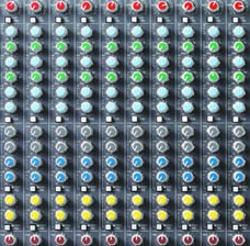
Trust Your Ears
The most important question is “Does it sound natural?” Does it sound like the CDs you’ve been listening to?
More specifically, does it sound like you were sitting in front of the real instrument? I keep this in mind throughout the performance.
I constantly glance down all the channels and think about each input. Kick, does the kick sound right? Bass, does the bass sound right? Guitar, does the guitar sound right? Piano, does the piano sound right? Vocals, do the vocals sound right?
Then I think about it all again and ask if the guitar and vocal are walking over each other. Can I hear the piano? Is it because the guitar has too much midrange near the piano part’s midrange? Try taking a little low mids our of the guitar instead of turning up the piano. I think you get the picture.
It’s almost impossible to make the initial adjustments to instruments or vocals in the mix with the whole band playing. Instead I try to have a snapshot of what I think the instrument should sound like.
Learning to EQ confidently means you know where you are heading. That’s why I recommend listening to CDs with a good set of full range headphones.
No cheap earbuds here… you need a pair that will allow you to hear the whole frequency spectrum, and preferably a sealed set, like good earphones or sealed headphones. You’ll be able to form a mental soundscape of that you can use when you are back behind the console.
Turn, Turn, Turn!
Here’s a bonafide “trick of the trade”: turn some knobs. I mean actually get in there and turn the heck out of the EQ knobs and listen to what they do.
Here is a simple technique to use in sound check.
Grab the gain (Figure 1) on the mid EQ of an instrument crank it up a bunch…
… now grab the frequency (Figure 2) of the mid and sweep it up and down.
You will hear a spot where it makes that instrument or voice sound horrible. Once you find it, take the gain back to zero, listen for a second again, and then cut out about 6 dB of it.
You will be amazed how much better that instrument sounds when you “get the junk out” as I call it. This is an amazing way to learn what frequencies sound like and the technique will eventually train your ear to hear the junk without boosting it first.
Becoming a master of EQ is like becoming a master painter. Sometimes you just have to throw some paint on a canvas and see how it works.
A 20-year veteran of working sound on the road, John Mills is the Education & Development manager for Morris Integration.

